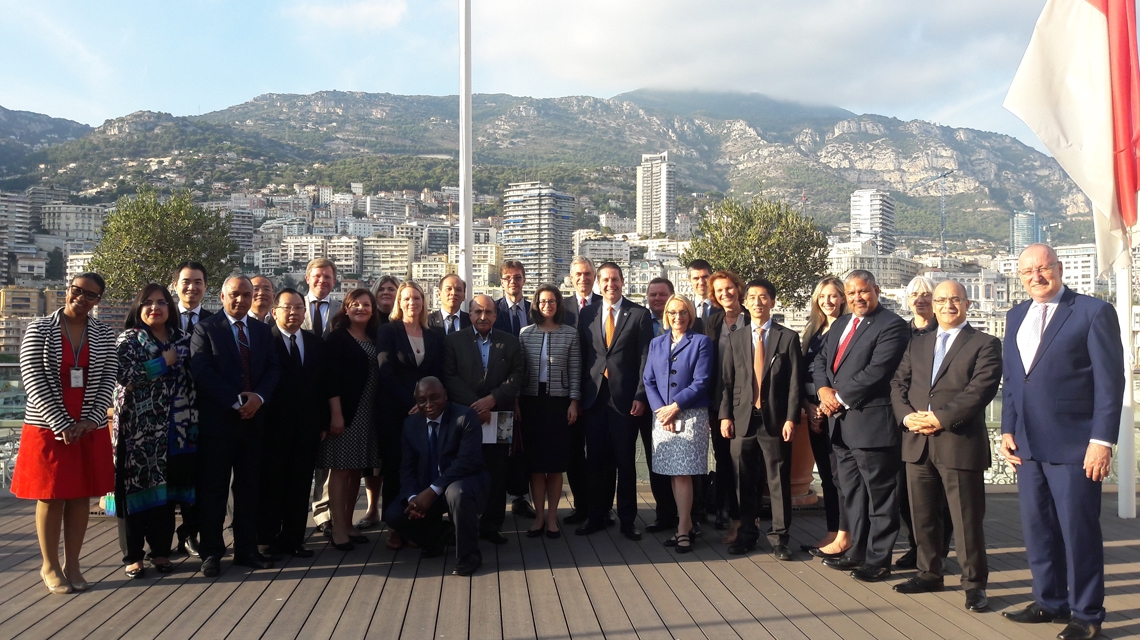Karolina Skog, the Swedish Minister for the Environment, together with ambassadors to Austria, permanent representatives to the UN in Vienna, and other diplomats representing nineteen Member states, learnt how nuclear and isotopic techniques can contribute to protecting the environment, as they visited the IAEA Environment Laboratories in Monaco?earlier this month.
Some of the highlights of the visit, led by Aldo Malavasi, Deputy Director General, Head of the Department of Nuclear Sciences and Applications, included a tour of the Radioecology Laboratory. With 9000 litres of aquaria, the laboratory can run experiments in controlled settings, and by changing parameters, such as increasing the temperature or the acidity of the water, study for example how marine organisms would react under future climate scenarios.
“When people hear the terms ‘nuclear’ or ‘a(chǎn)tomic’ they often think of nuclear power, or perhaps nuclear weapons, but that is only a fraction of the story”, said David Osborn, Director of the IAEA Environmental Labs, “The term ‘nuclear’ actually refers to the basic building blocks of matter. ?By studying the world around us at the ‘a(chǎn)tomic scale’, in other words at the level of the chemical elements, researchers can learn unique information about natural processes, such as the rates at which organisms grow shells and bones, or how different pollutants are transferred in different environmental compartments.”
In addition to modifying physiological processes, climate and other global changes could have an impact on the presence of contaminants in the environment and how organisms absorb them. These factors can have wide ranging consequences for ecosystems and fish stocks, aquaculture, and ultimately seafood safety and security.
The official delegations also visited the IAEA underground laboratory. Below 11 metres of rock, the facility is set up to reduce the signal coming from cosmic rays - radioactive rays from outer space - and houses large, ultra-sensitive germanium gamma-ray detectors. To further reduce ‘background noise’, the detectors have active shielding and ultra-low background lead, which enables IAEA researchers to detect very low levels of radioactivity in a range of environmental samples including seawater, fish and sediment samples.
The information provided from this specialised facility supports Member States in gaining accurate information on their environment and the potential presence of contaminants in the environment.
The IAEA Environment Laboratories can work with Member States to conduct precise baseline studies of various contaminants in their environment, for example before starting new mining or industrial initiatives. This information can be used to monitor any changes due to human activities, and provides valuable information to Member States.
“Nuclear science is precision science,” said Osborn. He added that this precision provides decision-makers with more accurate information to make science-based decisions, “allowing better environmental management, which, in turn, supports sustainable development”.







